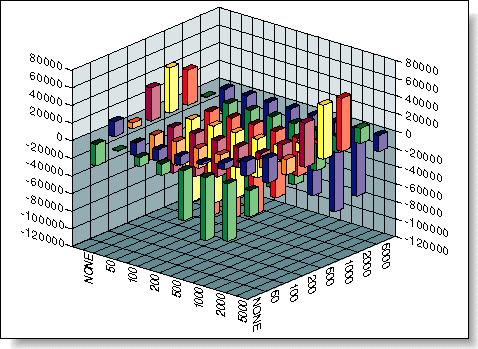
MONEY MANAGEMENT
Testing Exit Strategies
by Jeffrey Owen Katz, Ph.D., and Donna L. McCormick
Everyone's looking for entry trading signals, but what about after you're in the trade? Last time, Katz and McCormick looked at different techniques for making a graceful ? and profitable ? exit. This time, they're testing various exit strategies, both separately and in combination, to determine how well they can improve a trading system.
Last time, we discussed the problem of exit strategies. We determined that a good exit strategy is important because failing to exit at the proper time can cost a trader dearly, and we also concluded that a good exit strategy must, above all, strictly control losses while not sacrificing too many potentially profitable trades in the process; at best, it must allow profitable trades to fully mature. If risks can be controlled by quickly exiting from losing trades without killing or cutting short too many winning trades, a losing system might even be turned into a profitable one. Most important, during the inevitable bad periods, a good exit strategy that incorporates solid money management and capital preservation techniques can increase the probability that you will still be around for the next potentially profitable trade.
Since a complete exit strategy makes coordinated use of a variety of exit types to achieve the goals of effective money management and profit-taking, we discussed a number of such techniques, including money management exits (getting out of a trade at a fixed amount of adverse excursion or at a fixed price from where you entered); trailing exits, as implemented with trailing stops (if the market is moving in your favor, moving stops up ? or down, if short ? in order to lock in more of the increasing profit); profit target exits (a limit order set at a certain amount of profit you believe you can take out of the market); time-based exits (getting out at a predetermined point in time); volatility exits (exiting because the risk of holding the position is rapidly rising); barrier exits (those taken because the market has touched or penetrated some barrier ? for example, a support or resistance point, a trendline and so forth); and signal exits (getting out when a trading system provides a signal contrary to your current position).
Over the next several articles, we will empirically test various exit strategies, both separately and in combination, to determine how well they can improve a trading system. To do this, we need entries to create positions from which to exit. Therefore, we will construct a standard, random entry system and then try various exit strategies to determine which are the most effective at improving the profitability of the random entry system.
WHY A STANDARD, RANDOM ENTRY SYSTEM?
To obtain our standard entry system, we have decided to use a random number generator (RNG) to determine the times that we will enter trades and whether those trades will be long or short.
We are taking this approach for a number of reasons. First of all, we want a uniform way of testing the exits. Different types of entry systems have their own unique characteristics that affect the ways in which different exits and/or stops behave. If you have an entry system that forecasts exact market turning points, you can use a very tight money management stop that might even improve the system; however, with random entries, that might not be the case. Therefore, we would rather take the kinds of entries that might be typical of a bad system, or a system that is slightly tradable but not very good, to see how well it can be improved. (Obviously, a great entry system makes everything easier and reduces the need to find the most perfect exits possible.) An entry system that stays fixed over our exploration of the different types of exits will allow us to determine the degree to which we can improve the profitability ? if, in fact, we can get any profitability out of a totally random system ? by efficient money management and effective exit strategies.

Excerpted from an article originally published in the March 1998 issue of Technical Analysis of STOCKS & COMMODITIES magazine. All rights reserved. © Copyright 1998, Technical Analysis, Inc.